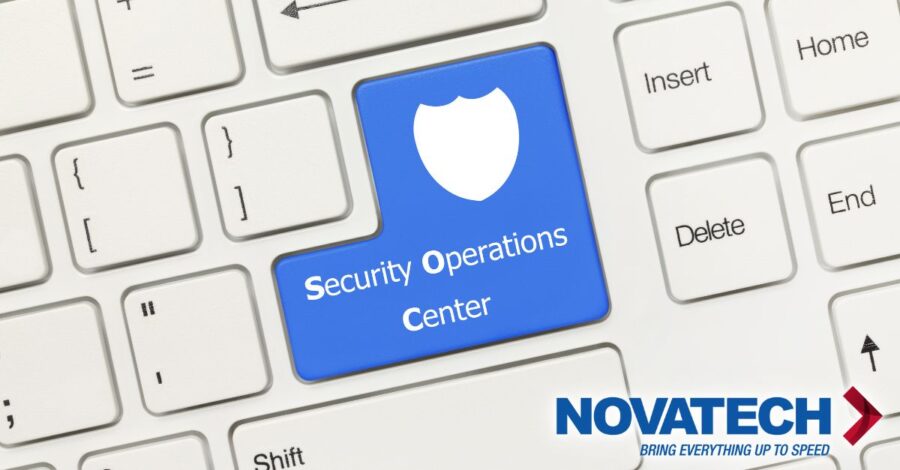The Role of Zero Trust in SASE Architecture
4 min read

As businesses grow and evolve, so do the cybersecurity threats they face. At Novatech, we believe that robust security should be accessible to all, irrespective of company size or technological prowess. That’s why we advocate for the adoption of Secure Access Service Edge (SASE) architecture. A key component of this modern approach is Zero Trust, a security model that has gained significant attention for its effectiveness in protecting networks from internal and external threats.
What is Zero Trust?
Zero Trust is a security model based on the principle of “never trust, always verify.” Unlike traditional security models, which assume that everything inside the corporate network is safe, Zero Trust treats every user and device as a potential threat. Each must be authenticated and verified before gaining access to network resources.
This ‘least-privilege’ approach ensures that users have only the minimum level of access necessary to perform their tasks, limiting the potential for unauthorized data access or lateral movement within the network.
Level of Difficulty for the Client:
With the adoption of anything new, there is a learning and adjustment curve. At first, there will be some noticeable disruptions, but we find most clients get past these small initial hurdles that happen in the first few weeks following implementation pretty easily. The added security is worth getting the team to learn how to authenticate for access to necessary network resources.
- Initial Adjustment: Users may find the initial stage of adaptation a bit challenging as they get used to the new authentication processes and limited access scopes.
- Simplified Management: However, once implemented, the Zero Trust model simplifies network management. Novatech’s managed IT services provide ongoing support and guidance to ensure a smooth transition and operation.
- Enhanced Security: The greatest benefit comes in the form of enhanced security, reducing the risk of both internal and external threats, thus offering peace of mind.
- Unified Solution: Being part of a SASE architecture, the Zero Trust model aligns perfectly with Novatech’s objective of unifying all your office technology needs under one umbrella.
Why is Zero Trust Crucial in SASE?
Enhanced Security: The Zero Trust component in SASE architecture offers an added layer of security by continuously authenticating and verifying the identity of users and devices. This is especially important for businesses dealing with sensitive information or subject to regulatory compliance.
Reduced Attack Surface: By granting only necessary permissions, Zero Trust reduces the avenues through which cybercriminals can exploit your network, making it less vulnerable to both external and internal attacks. Rather than having the entire network available to the whole company, the parts of the network each user needs is made available to them and exclusions are made for individuals who do not need access to these resources.
Flexibility and Adaptability: Zero Trust works seamlessly with cloud-native SASE architecture, making it easier for your business to adapt and scale security measures as your organization grows.
Unified Management: The integration of Zero Trust into SASE aligns perfectly with Novatech’s commitment to offering a complete technology solution under one umbrella. It simplifies the security management process, providing a unified platform for both networking and security needs.
Why Novatech Clients Should Insist on Zero Trust in SASE
Given Novatech’s goal of providing a comprehensive, unified technology solution for businesses ranging from 20 to 500 employees, Zero Trust within a SASE framework should be a non-negotiable feature. It offers an optimal blend of security and operational efficiency, enabling you to protect your organization while simplifying administrative processes.
By insisting on a Zero Trust component, you’re taking a proactive step in fortifying your network security, aligning with industry best practices, and setting your business up for scalable growth.
Contact Novatech today to learn how we can help with your SASE architecture and Zero Trust deployment. We are here to help!
FAQs
Q: How does Zero Trust work within a SASE framework?
A: Zero Trust works by consistently verifying the identity and permissions of users and devices before granting access to the network. This verification process is integrated into the SASE architecture, allowing for real-time, dynamic security.
Q: Is Zero Trust applicable for smaller businesses or just larger enterprises?
A: Zero Trust is scalable and can be applied to businesses of all sizes. Given that cyber threats can target any business, implementing Zero Trust through a SASE framework is a wise choice for both small and large enterprises.
Q: How does adopting Zero Trust affect my current IT setup?
A: Integrating Zero Trust into a SASE architecture may require some initial setup changes, but these are designed to enhance your existing IT infrastructure rather than disrupt it. The unified nature of SASE ensures a smoother transition and easier management moving forward.


